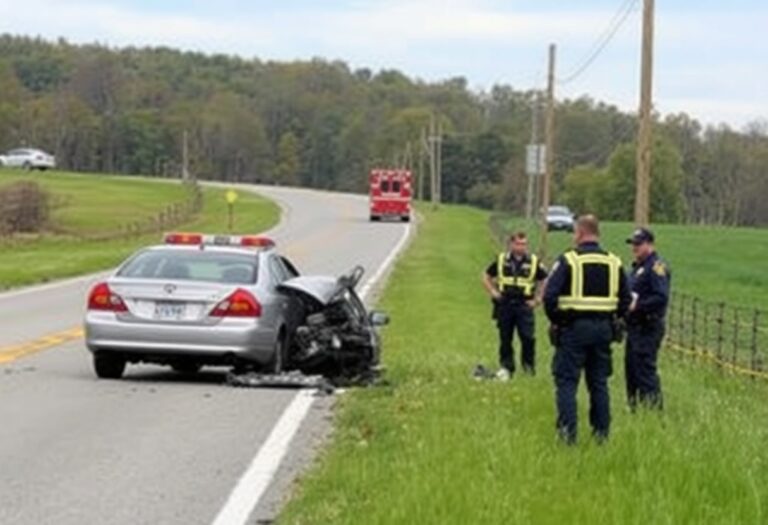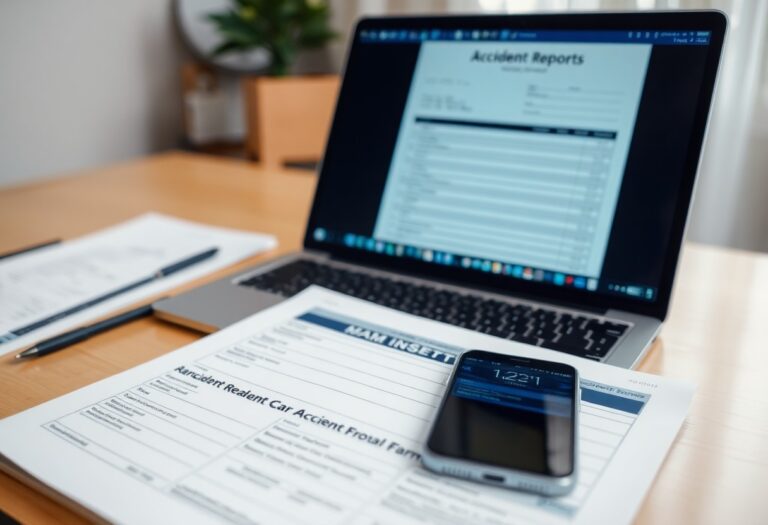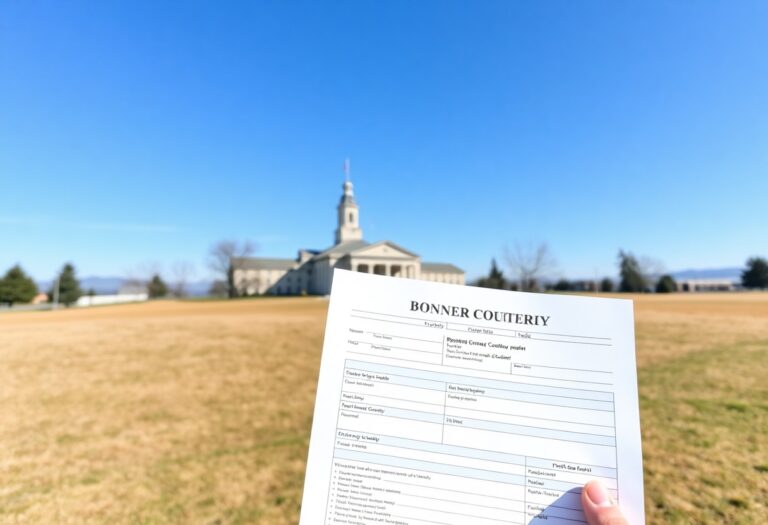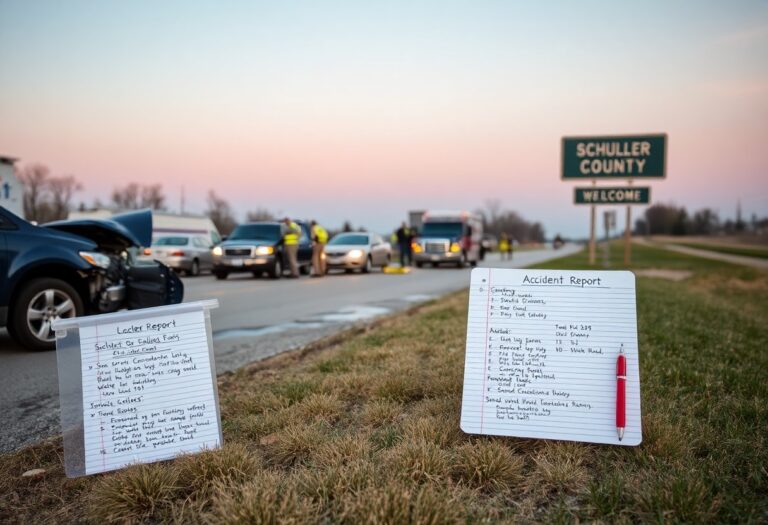Barnes County is an important area for understanding the process of obtaining crash reports following vehicle incidents. If you’ve been involved in a crash, it is vital for you to have access to the correct documentation to support your case, file insurance claims, or seek legal assistance. This guide will provide you with clear, step-by-step instructions on how to request your crash report efficiently, ensuring you have all the necessary information at your fingertips to handle your situation effectively.
Navigating the Legal Framework Surrounding Crash Reports
The process of obtaining a crash report is intertwined with specific legal guidelines and regulations that dictate how these documents are managed. Understanding these legal parameters ensures that you navigate the system effectively, safeguarding your rights and interests. Familiarizing yourself with local laws can expedite your request, reduce potential delays, and help avoid common pitfalls associated with accessing accident documentation.
The Role of Law Enforcement in Accident Documentation
Law enforcement plays a pivotal role in the documentation of accidents, providing the official reports that serve as important evidence in various legal matters. Officers on the scene gather details such as driver and witness statements, vehicle damage assessments, and any indications of negligence or violations. This thorough documentation is critical for insurance claims and potential legal proceedings, solidifying the reliability of the information contained within the reports.
Understanding Open Records Laws in North Dakota
North Dakota’s open records law promotes transparency by ensuring public access to government documents, including crash reports. Under these laws, you have the right to obtain accident reports, provided you meet specified criteria. However, certain sensitive information—such as social security numbers and personal medical details—may be redacted to protect privacy. Familiarity with these laws will enhance your ability to receive the necessary documentation efficiently, empowering you to stay informed throughout the process.
North Dakota Century Code § 44-04-18 details the specific provisions regarding public records access and strikes a balance between transparency and privacy. Here, accident reports typically become available to the public after a brief period—usually around 7 days—allowing time for initial investigations to conclude. Understanding this timeframe is beneficial, especially if you require the report for timely legal assistance or insurance claims. Other aspects, like the ability to request certain documents electronically, can further simplify your interactions with law enforcement agencies, keeping you well-informed every step of the way.
Identifying Your Need: Types of Crash Reports
Understanding the different types of crash reports is vital for your specific needs. You can categorize crash reports based on their purpose and ownership. Here are some common types of reports:
- Official Reports – These are generated by police and are legally recognized.
- Informal Reports – These can come from various sources but are not used in legal proceedings.
- Accident Reports – Detailed accounts of the accident, usually including witnesses and conditions.
- Insurance Reports – Collected for claims purposes, these focus on financial aspects.
- Traffic Collision Reports – Focus on the specifics of traffic incidents and contributing factors.
Knowing what type of report you need can save time and streamline your request process.
| Type of Report | Description |
|---|---|
| Official Reports | Generated by law enforcement, used in legal cases. |
| Informal Reports | Not legally binding, obtained from various sources. |
| Accident Reports | Detailed accounts including witness explanations. |
| Insurance Reports | Focus on details needed for insurance claims. |
| Traffic Collision Reports | Detail the causes and conditions leading to the crash. |
Official vs. Informal Reports
Official reports are filed by law enforcement at the scene, offering an accurate and legal account of the incident. They often hold more weight in court proceedings, while informal reports might include eyewitness accounts or personal notes. While informal reports can provide insight, they lack the formal validation necessary for legal use.
Public vs. Private Parties: Who Can Request What?
Public access to crash reports varies significantly between official and informal reports. Typically, anyone can access certain detailed crash reports, while private parties like insurance companies may have restrictions. The reporting agency dictates who can obtain certain types of reports, as law enforcement often prioritizes official requests over casual inquiries.
In North Dakota, you can request crash reports under the North Dakota Open Records Law. This allows the general public access to certain accident documentation, especially if the information pertains to traffic safety and accountability. Public parties, including insurance companies, have a legal right to acquire these reports for processing claims. Private individuals, however, may face limitations based on the nature of their inquiry and the privacy laws governing the incident in question. Attaching identifying information or context can greatly facilitate your request.
Step-by-Step Process for Requesting a Crash Report
Gathering your crash report is straightforward when you follow a clear process. Below is a breakdown of steps to help you obtain your report efficiently:
| Step | Action |
| 1 | Prepare your request with necessary information |
| 2 | Select the appropriate law enforcement agency to submit your request |
| 3 | Pay any required fees |
| 4 | Receive your crash report |
Preparing Your Request: Information You’ll Need
To request your crash report, you’ll need specific information including the date of the accident, location, your name, and contact information. Additionally, details such as vehicle identification numbers and the names of involved parties may also expedite the process. Having these details readily available minimizes delays in obtaining your report.
Where to Submit Your Request: Local Law Enforcement Agencies
Your request for a crash report should be directed to the appropriate local law enforcement agency that responded to the accident. In Barnes County, this might include the Sheriff’s Office or any city police department involved in the incident. Each agency may have different procedures, so verifying with them can streamline your request.
To ensure you reach the correct agency, begin by determining which law enforcement body handled your crash report. If uncertain, contacting the Barnes County Sheriff’s Office is a good starting point. They can guide you to the right department and provide details about any specific forms or requirements needed for your request.
Fees Associated with Crash Report Requests
Fees for obtaining a crash report can vary by agency, but expect to pay between $5 to $20 for a standard copy. Many agencies offer convenient payment options, including online transactions or in-person payments. Be sure to confirm the exact fees with the agency from which you’re requesting the report to avoid surprises.
In some cases, agencies may waive fees for certain individuals, such as those involved in the accident or their legal representatives. Be sure to clarify this possibility when you make your request, as it could save you some money while ensuring you obtain the report you need effectively.
Common Pitfalls in the Request Process
Many people encounter common pitfalls that can delay or complicate their request for crash reports. Understanding these issues can save you time and frustration. For instance, being unaware of specific requirements related to identification or request format can lead to automatic denials. Missing out on important details or overlooking deadlines are other frequent missteps that people make during this process.
Misunderstandings About Timeframes
One frequent point of confusion is the timeframe for receiving your crash report. While some expect immediate access to documents, processing times can vary widely depending on the jurisdiction and the specific circumstances surrounding the crash, often taking anywhere from a few days to several weeks.
Errors to Avoid When Filling Out Forms
Providing incomplete or incorrect information on your request forms can lead to significant delays or even rejections. Each detail, from your contact information to specifics about the incident, matters greatly. For example, if you neglect to include the exact date of the crash or the report number, authorities might not be able to locate your request in their system.
Keep in mind that forms often have specific requirements. Always double-check for required fields and ensure your responses are accurate. Minor errors, such as typos in your name or inconsistent addresses, might flag your application for review. Additionally, failing to provide necessary identification or proof of your relationship to the incident can stall your request. Therefore, take your time to review each section critically before submission to help avoid unnecessary complications.
Beyond the Basics: Utilizing Crash Report Insights
Analyzing crash reports goes beyond just understanding what happened; it offers valuable insights that can inform policy changes, improve road safety, and optimize insurance processes. By delving into the data, you can identify patterns in accidents, such as frequent collision spots or common contributing factors like speeding or weather conditions. This information equips you with a greater understanding of local road safety challenges and enables you to advocate for necessary changes or enhancements to infrastructure in Barnes County.
How Crash Reports Contribute to Insurance Claims
Crash reports serve as a critical component in determining fault when filing insurance claims. They provide detailed accounts of the incident, including the involved parties, time and location, and specific circumstances, which can significantly impact the outcome of your claim. Insurance adjusters rely heavily on these reports to assess liability and settle claims fairly, ensuring you receive the appropriate compensation for damages or injuries.
Leveraging Data for Safer Community Planning
Utilizing crash report data aids in formulating effective community planning strategies aimed at enhancing overall public safety. Policymakers and urban planners can analyze trends and statistics from these reports to identify high-risk areas, allowing targeted interventions. For instance, if data shows a specific intersection consistently exhibits high accident rates, local authorities might consider implementing improved signage, traffic lights, or roundabouts to reduce the likelihood of future incidents.
Incorporating crash data into community planning efforts is an evidence-based approach that promotes safer environments. As urban areas grow and evolve, recognizing the implications of historical crash data can lead to proactive measures, such as improving pedestrian crossings, creating bike lanes, or enhancing street lighting in poorly lit areas. Collaboration among city planners, law enforcement, and community members, informed by comprehensive crash report analysis, ensures road safety becomes a shared responsibility. These efforts not only protect residents but also foster a culture of vigilance and care within the community, potentially reducing the frequency of accidents over time.
Summing up
So, when it comes to requesting crash reports in Barnes County, North Dakota, following the proper steps can simplify the process for you. Make sure to gather all necessary information regarding the accident, understand the specific requirements of the local authorities, and utilize online resources or direct contact methods for submission. By staying organized and informed, you can efficiently obtain the documentation you need without unnecessary delays.













